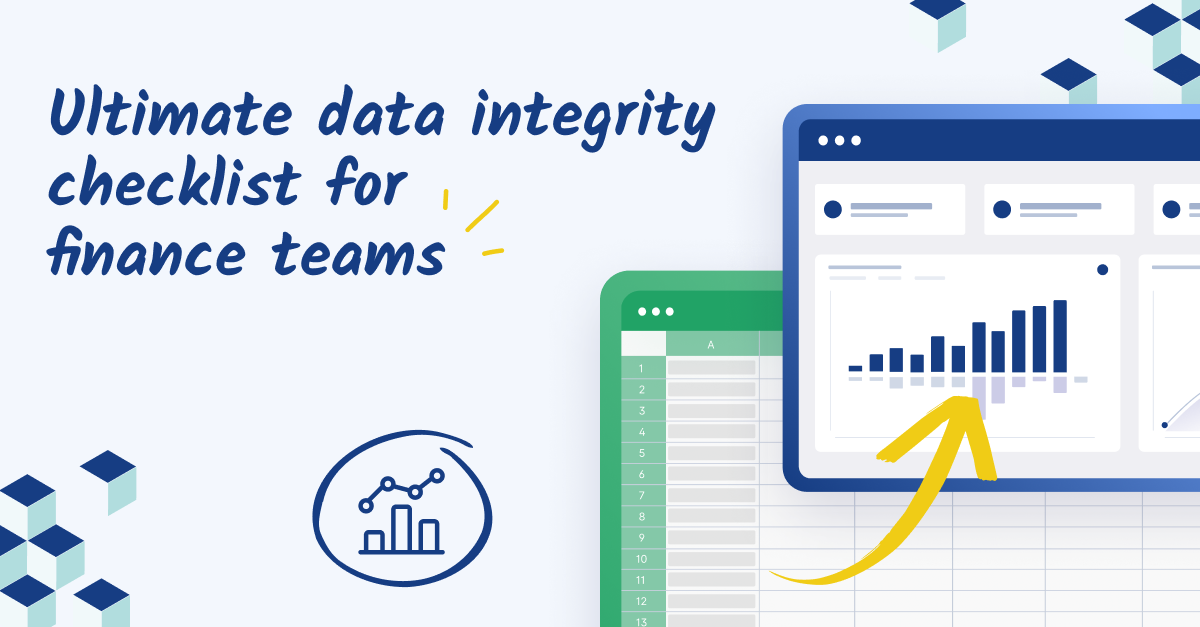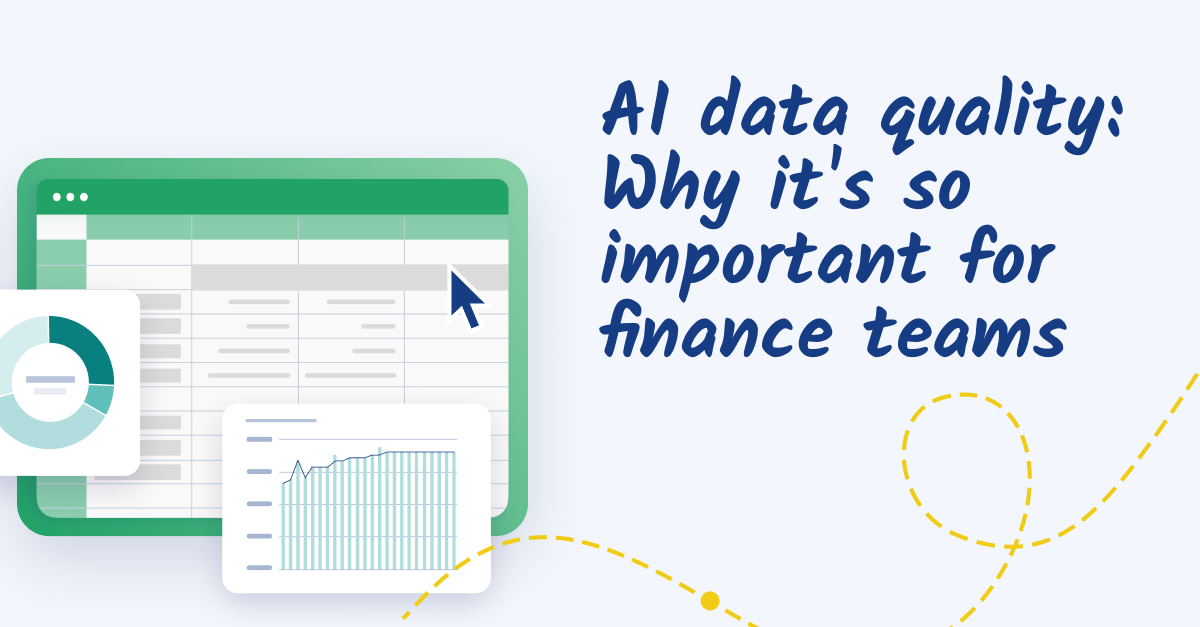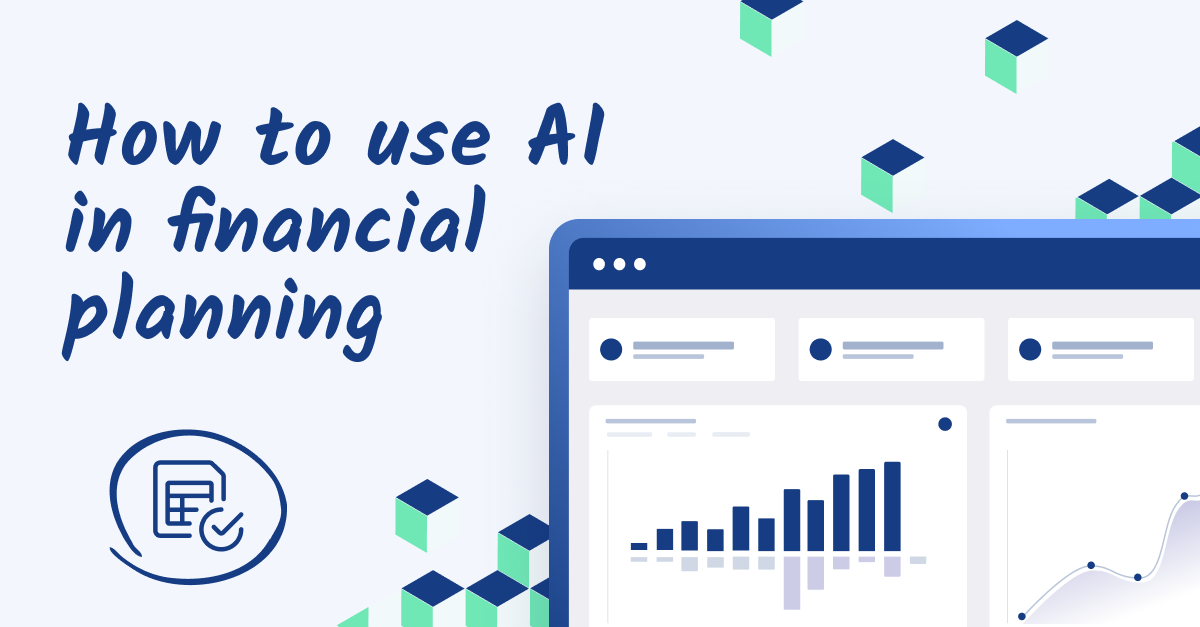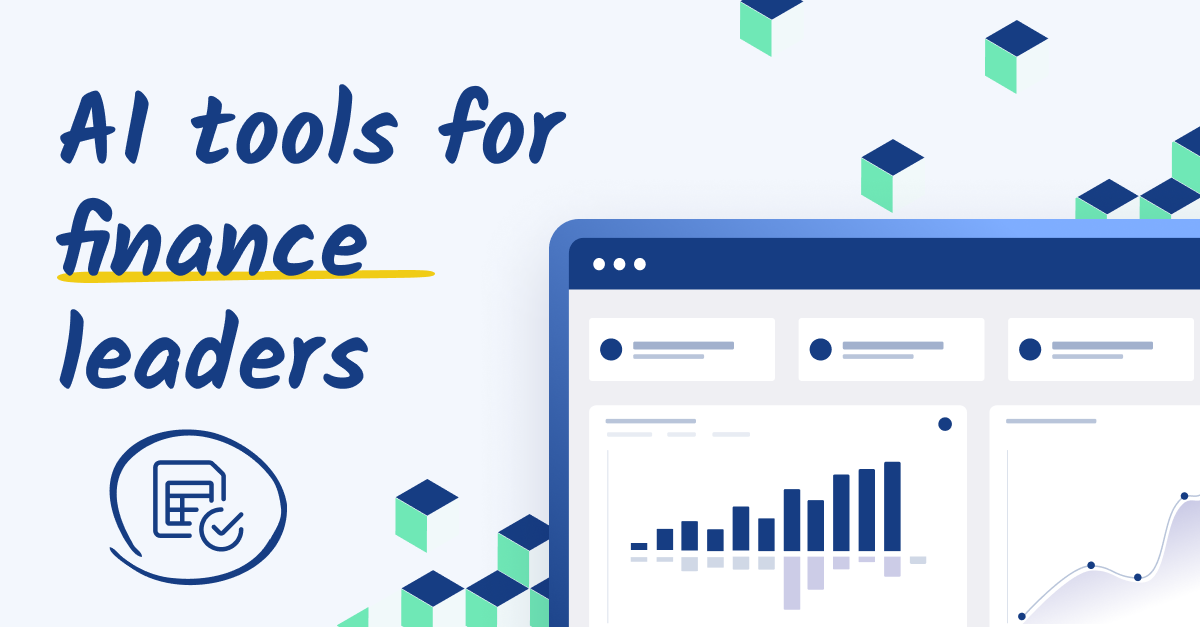What is data integrity?
Data integrity means your numbers tell the truth—consistently and reliably—from the moment they enter your system through every analysis and report. Think of data integrity as a seal of quality that ensures financial data remains accurate, complete, and trustworthy across all your operations.
There’s a few different types of data integrity:
- Physical integrity: Keeps your data safe from hardware issues and physical threats. Strong physical integrity means having proper backups, secure servers, and protection against environmental risks like power outages or natural disasters.
- Logical integrity: Maintains the relationships between your data points. When you update numbers in one place, logical integrity ensures related entries stay synchronized through:
- Entity Integrity: Every transaction gets a unique transaction identifier (UTI)
- Referential Integrity: Connected data points maintain their relationships
- User-Defined Integrity: Custom rules match your specific needs
- Domain Integrity: Values stay within acceptable ranges
- Temporal integrity: Preserves data accuracy across time periods. Your historical data remains reliable, and timestamps reflect actual events—critical for tracking trends and creating forecasts.
- Data transmission integrity: Guards against corruption during transfers. When you move data between systems, what arrives matches what was sent.
Principles of data integrity
Initially defined by the US Food and Drug Administration (FDA), the ALCOA principles—Attributable, Legible, Contemporaneous, Original, and Accurate—offer a comprehensive framework for understanding and maintaining data integrity. Financial data drives strategy and decision-making, making these principles essential for maintaining data integrity:
- Attributable: Every transaction must be traceable to the individual who recorded it, with a timestamp for accountability. This is key for audit trails, access control, and compliance.
- Legible: Financial data should be clear and easy to interpret, ensuring informed decision-making across the organization.
- Contemporaneous: Transactions should be recorded in real time to keep financial models and reports up to date, improving forecasting, budgeting, and strategic planning.
- Original: Data should originate from a single, unaltered source to maintain consistency and prevent discrepancies.
- Accurate: Financial data must be factually correct, properly formatted, and drillable, enabling precise analysis and decision-making.

Why is data integrity so important in finance?
Finance teams make better strategic decisions when they’re based on reliable data. Clean, accurate numbers help you spot trends faster and respond to changes before they become problems. For example, when sales decline, trustworthy data reveals whether specific products, regions, or channels need attention—letting you target solutions precisely where they'll have the most impact. Or, when managing expenses, reliable data helps identify cost overruns before they spiral. If payroll data is inaccurate, for instance, you might underestimate labor costs—leading to cash flow issues or budget gaps that disrupt operations.
Data integrity also connects directly to your bottom line. Regular audits, meticulous record-keeping, and robust systems prevent errors that could derail strategic planning or trigger compliance issues. Each data point matters, from transaction records to forecast inputs, because inaccurate information compounds quickly across reports and analyses, reinforcing the need to regularly reconcile your balance sheet.
Speaking of compliance—initiatives like the General Data Protection Regulation (GDPR) require finance teams to maintain clear audit trails and secure data management practices, reinforcing the need to build a culture of compliance on your FP&A team. Meeting these standards isn't just about avoiding penalties—strong data governance protects your organization's reputation and keeps operations running smoothly by emphasizing financial compliance management.
The strategic finance hierarchy of needs depends on reliable data at every level. From daily transactions to long-term forecasting, accuracy builds confidence in your strategic planning. When you know your numbers are right, you'll spend less time fixing errors and more time driving value through high-impact analysis and decision-making.
Data integrity checklist for finance teams
Let's cut straight to what makes data integrity work: clear processes, consistent execution, and reliable systems. Here's your actionable checklist to strengthen data quality across your finance operations.
1. Data cleansing and validation
Clean data starts with strong validation—and validation starts at the point of entry. To clean and validate your data properly, make sure to:
- Create data standards. Define how teams should enter and format data, from dates to decimal places. Consistent naming conventions, standardized categories, and clear data-entry protocols reduce errors and improve analysis.
- Set review schedules. Match your cadence to your data's impact—weekly spot checks or automated error detection prevents small mistakes from compounding into major reporting issues. Make sure to assign data owners who are responsible for reviewing and correcting discrepancies. When everyone understands their role in maintaining data integrity, errors are caught faster, and financial reports remain trustworthy.
- Remove duplicate entries and outdated data. Establish periodic data reviews to identify outdated or unnecessary data and cross-check figures across multiple systems to guarantee consistency. Automated tools flag and merge duplicate records before they spread, stopping mismatched figures from distorting your financial reporting.
- Standardize data collection and storage. Create clear guidelines on how to record and store data. Implement data validation rules to enforce correct formatting, avoid missing fields, and flag discrepancies.
- Add real-time, automated checks. Let software catch errors immediately—not after they've propagated through reports. Real-time validation tools can automatically flag anomalies before they impact financial models. These tools pick up on missing invoice numbers, inconsistent revenue entries, and misclassified expenses that would take a human far longer to identify.
Even with automation, human oversight is crucial. Provide regular training on compliance management so your team understands and takes ownership of their roles in maintaining regulatory standards. Employees should be equipped to identify potential data mismatches, formatting inconsistencies, and suspicious transactions before they affect forecasting and reporting.
2. Data governance
A clear data governance framework helps teams know what to do—and what not to do—with financial data. Here are some best practices that keep your data controlled and trustworthy.
- Identify key financial data. Determine what data is most critical for your business and structure it correctly from the start. For example, if Annual Recurring Revenue (ARR) reporting is essential, categorize contracts as recurring vs. non-recurring to prevent misreporting.
- Name data owners. Make specific people responsible for specific data sets. Also called data stewardship, naming owners improves accountability within your organization and shows external stakeholders that you’re serious about data quality management.
- Control access levels. Give teams access to what they need, nothing more. Role-based access controls to ensure employees can only view or edit the data they need. This minimizes the risk of unauthorized changes, enhances security, and supports compliance with regulations like GDPR and the Sarbanes-Oxley Act (SOX).
- Build approval flows. From time to time, you’ll need to make changes and updates to your data. Make sure you have standardized workflows in place to keep all interested parties informed and maintain good data hygiene.
- Check compliance. Data governance is not a one-time setup—it requires ongoing oversight. Run regular checks against your governance rules to verify that your team is adhering to governance policies and adapt them as needed based on regulatory updates, business growth, or operational changes.

3. Data consolidation
Bringing data together from multiple sources creates a single source of truth. To make the data consolidation process faster and more accurate, follow these tips.
- Optimize financial data categories for clarity and accuracy. Too many categories can complicate analysis but too few can hide the intricacies of key business drivers, so make sure to adjust categories as your company evolves. For example, while sales and marketing might initially be grouped together in financial models, as each function expands, separating them can provide more precise insights into revenue generation and performance trends.
- Connect your systems. Use automated tools and software solutions to consolidate financial data from various sources—including sales, operations, finance, and HR—into a unified system. This gets everyone working from the same dataset and minimizes errors caused by manual data entry. Most FP&A leaders invest in software with real-time integrations between enterprise resource planning, customer relationship management, and financial planning software to improve data accessibility and accuracy across the organization.
- Check consolidated data. Implement automated reconciliation tools to compare data from different sources and flag inconsistencies. Periodic reviews will help ensure financial models reflect realistic business conditions, preventing miscalculations that could lead to flawed decisions.
4. Data security
Financial data is a prime target for cyberattacks and fraud, while accidental leaks can put your business at risk without any third-party interference. From unauthorized access to data corruption during transfers, security threats can emerge at multiple points within your financial ecosystem. A comprehensive approach to security—one that includes strict access controls, encryption, and regular system updates—helps mitigate risks and ensures that financial data remains accurate, confidential, and available when needed.
Here’s how to build a strong security framework that protects your financial data and its integrity:
- Taking a proactive approach: Security isn’t just about defense—it’s about preparation. Regular penetration testing, vulnerability scans, and a well-documented breach response plan ensure you’re ready to act swiftly if a security incident occurs. Transparency in the event of a breach helps maintain trust with customers and stakeholders.
- Setting up appropriate access levels: Employees should only access the data necessary for their roles. Limiting entry points reduces the risk of breaches and strengthens security by minimizing exposure. Regular user access reviews ensure permissions remain appropriate as roles change, preventing unnecessary access that could lead to security vulnerabilities.
- Mandating strong passwords and two-factor authentication (2FA): Require employees to use complex passwords with uppercase letters, numbers, and special characters on work and personal devices. Enforce 2FA, which requires a second verification step beyond a password, making it significantly harder for hackers to gain access.
- Vetting third parties: Many businesses rely on third-party vendors, but not all have strong security protocols. Before working with any external partner, assess their security measures to prevent data breaches that could compromise your company’s reputation and lead to legal consequences.
- Encrypting data: What happens if sensitive data is intercepted? Encryption ensures that even if bad actors gain access, the data remains unreadable—adding a crucial layer of protection.
- Updating software regularly: Cyber threats evolve and outdated software is an easy target. Regular system updates patch vulnerabilities and prevent bad actors from exploiting security gaps.
- Establishing clear reporting procedures: Educating employees on security risks is just the first step. Ensure there’s a defined process for reporting suspicious activity so threats can be escalated and addressed quickly.
5. Data backups
Backups protect you from data disasters, keeping critical financial information accessible even in the event of system failures, cyberattacks, or accidental deletions. Without reliable backups, a single incident—such as a ransomware attack or hardware failure—could lead to irreversibly compromised financial reporting and regulatory compliance. To maintain data integrity, backups should be automatic to prevent human error, regularly tested for reliability, and easily recoverable to minimize downtime and ensure business continuity.
Make sure to:
- Schedule automatic backups: Set daily, weekly, or real-time backups based on how frequently your data changes. Maintain a versioning system so you can restore previous copies if needed.
- Store backups safely: Keep copies in secure, separate locations, such as an offsite data center or a cloud-based solution with strong encryption. Use encrypted backups to prevent unauthorized access, ensuring data remains secure even if storage is compromised. Cloud-based backup tools like Google Cloud Backup, AWS Backup, and Microsoft Azure Backup offer scalable, encrypted storage that ensures data remains secure even if on-premise systems are compromised.
- Practice recovery: Establish a disaster recovery plan with clear roles and procedures for restoring operations quickly. Regularly test backup restoration to confirm data integrity and accessibility. You can even simulate real-world scenarios (e.g., ransomware attack, accidental deletion) to ensure your team can execute a swift recovery.
6. Consistent audits
Regular audits keep your data reliable. Make them part of your standard operating rhythm, aligning them with a systematic month-end close process to record and reconcile transactions accurately.
- Watch key metrics. Monitoring how quickly teams can access data, how frequently errors occur, and whether records remain complete can reveal potential gaps in your data integrity processes. Track data retrieval speeds, reconciliation efficiency, and discrepancies in financial reporting to check whether systems are functioning smoothly and that your data is still reliable.
- Schedule regular reviews. Set fixed times for data quality checks, internal audits, and compliance reviews to proactively identify and resolve issues. Whether it’s a monthly financial review, quarterly data integrity audit, or an annual compliance assessment, regular evaluations are critical to preventing reporting errors.
- Fix problems fast. Audit findings should lead to immediate corrective actions to improve data governance, standardize reporting, and eliminate inconsistencies. Establish a clear FP&A remediation process for addressing errors and use root cause analysis techniques to prevent recurring issues and improve overall data quality and accuracy.
- Stay on top of industry regulations. Financial data is subject to various regulatory requirements, including Generally Accepted Accounting Principles (GAAP), International Financial Reporting Standards (IFRS), SOX, and GDPR. Regular audits help confirm that data governance policies align with legal and compliance standards.
- Document findings and improvements. A well-documented audit process enhances transparency and accountability while providing a historical record of data integrity improvements. Maintain a centralized repository for audit logs, compliance reports, and corrective actions to streamline documentation and ensure consistency across finance teams.
7. Team member training
Your finance team can make or break data integrity. Give them the knowledge and tools to maintain high standards with:
- Share clear policies. Define proper data entry procedures, validation protocols, and access permissions to minimize errors and maintain compliance. These policies should be easily accessible through an internal knowledge base, training portal, or documentation system so team members can quickly reference them when needed.
- Show the impact. Help your people understand why data integrity matters to encourage greater accountability and precision in data handling. Real-world case studies or internal audit findings demonstrate how inaccurate data has led to reporting errors, compliance violations, or financial misstatements.
- Encourage cross-functional collaboration. Since data integrity spans multiple departments, finance teams should work closely with IT, compliance, and operations to ensure consistency. Interdepartmental training sessions show how different teams interact with financial data and help to prevent miscommunications that could affect reporting accuracy.
- Keep training current. Hackers, regulators, and tech companies will constantly change the game—so your team needs to stay up to date. Offer regular training workshops, online courses, or certification programs focused on data integrity best practices, fraud prevention, and compliance standards. Learning management systems can also provide on-demand access to training resources.
- Implement a culture of accountability. Beyond technical training, reinforce personal responsibility for data quality as much as possible. Encourage team members to flag inconsistencies, ask questions, and proactively correct errors when they arise and use data quality checklists to make integrity a shared priority across the organization.
Follow a data integrity checklist to support strategic decision-making
With something as low-tech as a data integrity checklist, you can reap the high-value rewards of analyzing trends with confidence, efficiently auditing your business, and preventing costly errors to your company’s value and reputation.
From data cleansing and validation to governance, security, and backups, every step in this checklist ensures that finance teams operate with reliable information that fuels better forecasting, compliance, and strategic execution.
Take Cube's Strategic Finance Assessment and gain valuable insights into the alignment of your finance team with your overarching business goals—enabling you to optimize operations, drive innovation, and maximize profitability.



.png)










